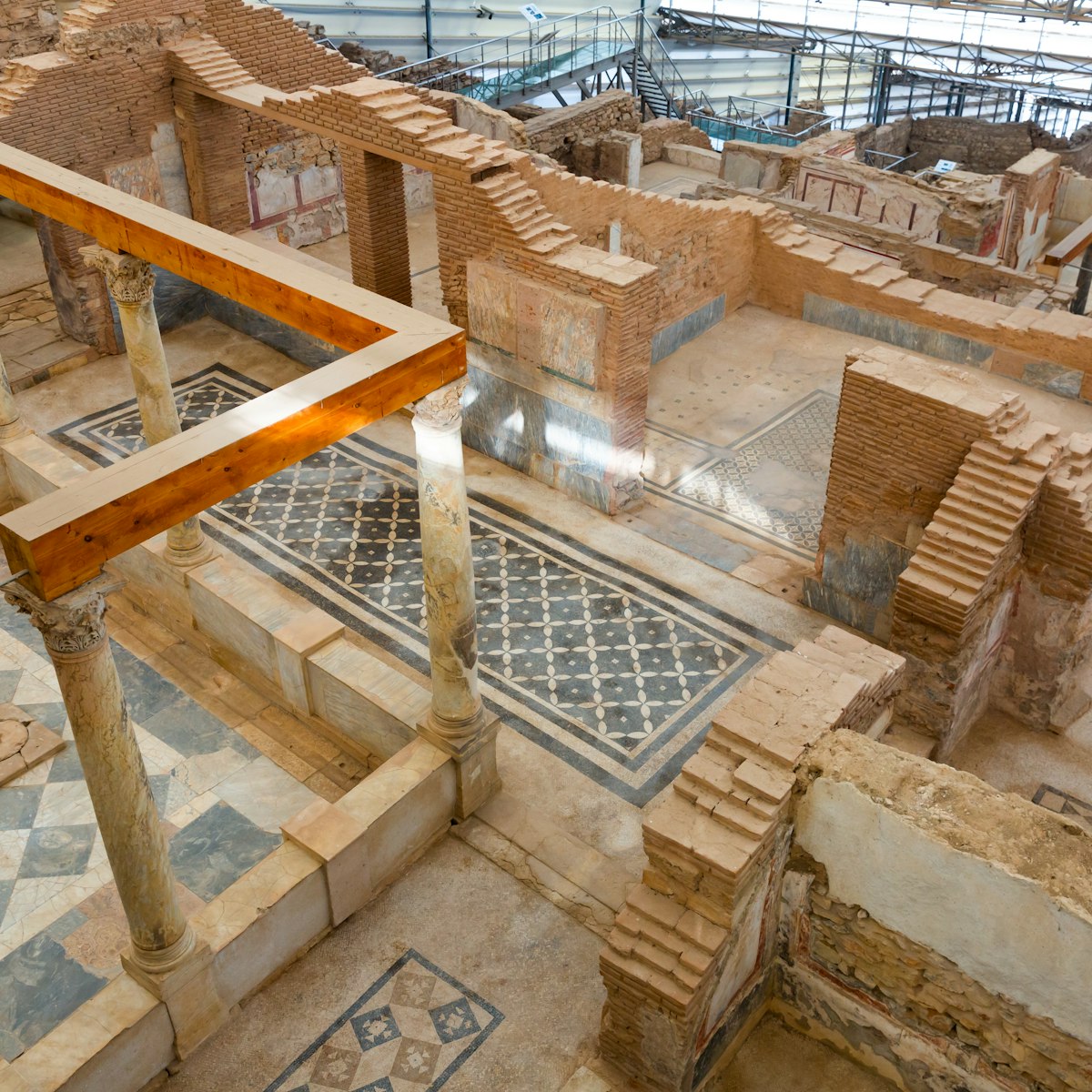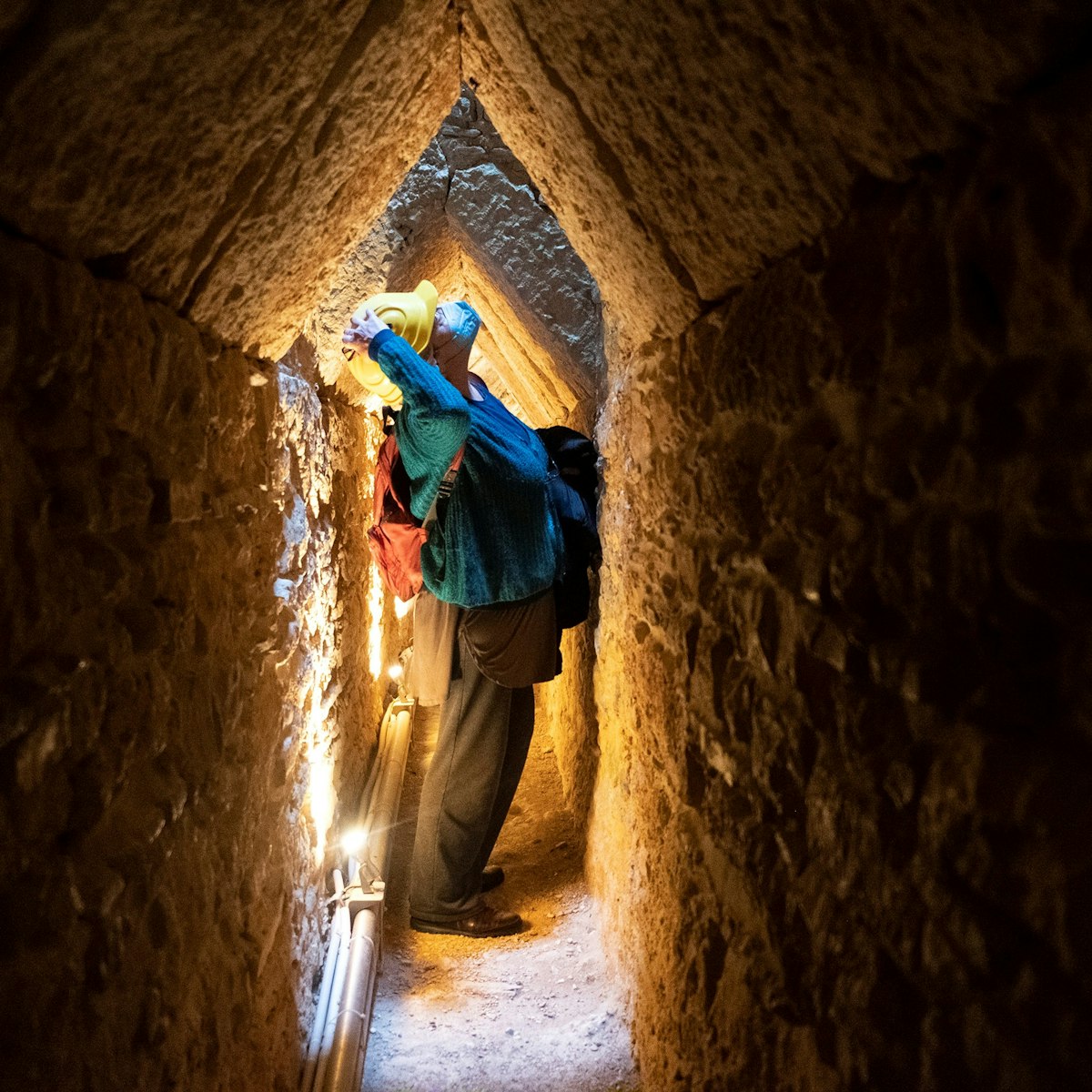Named for the demigods who helped Lena give birth to Artemis and Apollo, the Curetes Way was Ephesus' main thoroughfare, 210m long and lined with statuary, religious and civic buildings, rows of shops selling incense, silk and other goods, workshops and even restaurants. Walking this street is the best way to understand Ephesian daily life.
Circular depressions and linear grooves are sporadically gouged into the marble to keep pedestrians from slipping on the slick surface. This was important not only during winter rains, but also during the searing summer heat; shopkeepers would regularly douse the slippery marble street with water from the fountains to cool them down.
Flowering trees once shaded the street and shops which also lowered the temperature. Right under where they stood, there are occasional stone abutments adorned with 12 circular depressions – boards for games of chance that ancient Ephesians would play for fun and even bet on: the contest was known in Latin as Ludus Duodecim Scriptorum (Game of 12 Markings), the predecessor of backgammon.
There's a rather patchwork look to the street's marble blocks – many are not in their original places, due to ancient and modern retrofitting. An intriguing element in some blocks are the tiny, carved Greek-language initials; they denoted the name of the specific builder responsible for the relevant section. This helped labourers collect their pay, as it proved they had been put into place.
Several structures along the way have occasional oval depressions in the walls – these held the oil lamps that lent a magical glow to the city’s main thoroughfare by night. The larger holes in the marble were for torches.





